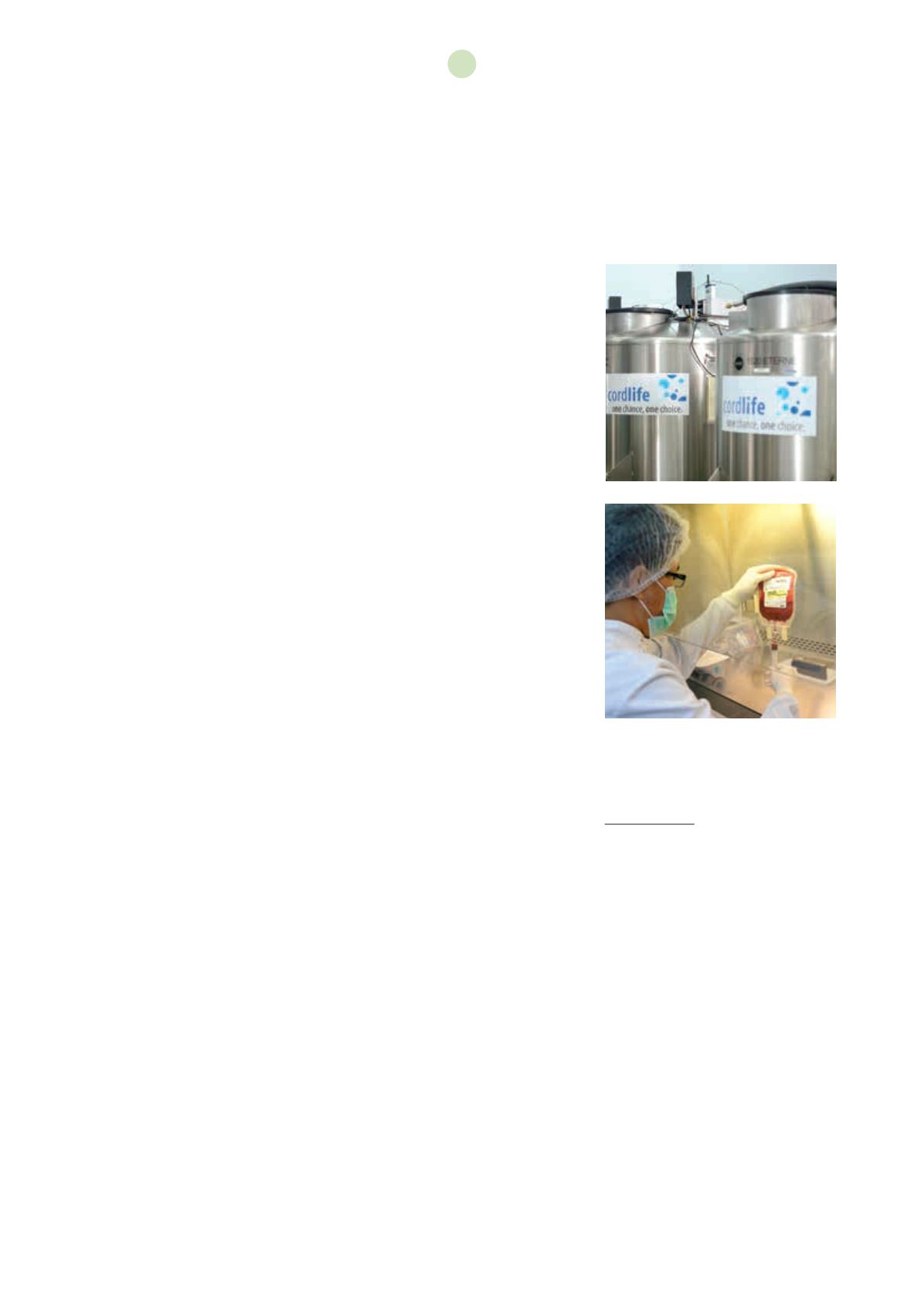
16
CORDLIFE GROUP LIMITED
| ANNUAL REPORT 2015
BUSINESS UNIT SPOTLIGHT:
BANKING
LEVERAGING ON TECHNOLOGICAL
ADVANCES TO IMPROVE SERVICE
STANDARDS
Cordlife continually directs its efforts
towards incorporating technological
advancements into its service offerings.
For one, it was amongst the first in Asia
to adopt SEPAX®, a U.S. FDA-cleared
fully automated cord blood processing
system, as well as the first in Asia to
lead the upgrade of the technology
to SEPAX®2. Shifting from manual
processing to a fully automated platform
was imperative to achieve optimal cell
recovery rates during processing to help
enhance the success rate of a transplant.
WIDENING BANKING
OPPORTUNITIES FOR PARENTS
Along with the option of cord blood
banking, parents are also provided with
an added option of cord lining banking,
in line with Cordlife’s growth plans to
offer complementary services to its
clients through strategic partnerships
and collaborations. Cordlife entered
into licensing agreements with CCBC
and StemLife to offer the cord lining
banking service to their prospective
clients in China and Malaysia in early
2014. In the first quarter of FY2015,
Cordlife successfully launched cord
lining banking in Indonesia.
Previously
disposed
after
birth,
researchers have recently found that
the umbilical cord contains functional
and potentially life-saving stem cells
that can play an important role in
regenerative and cellular therapy.
Beside cord blood, the umbilical cord
itself contains Wharton’s jelly, umbilical
arteries and an umbilical vein. These
components are protected by a sheet-
like membrane known as cord lining.
While Wharton’s jelly contains one type
of stem cells – Mesenchymal stem cells
(“MSCs”), cord lining today has been
discovered to contain two important
types of stem cells including MSCs and
Epithelial stem cells (“EpSCs”). EpSCs
form the soft tissues that connect,
support or surround other structures
and organs of the body including
cornea and skin, as well as the lining of
the stomach and liver.
Based on current research, EpSCs are
considered to be a possible key resource
for epidermal and skin regeneration.
They have been used to successfully treat
surface ulcers, burns and tissue trauma.
At present, EpSCs are also actively
researched in the field of regenerative
medicine for corneal replacement. On
the other hand, MSCs act as the building
blocks of structural tissues of the human
body such as bone, cartilage, muscle,
fibrous tissues and fat. According to
clinicaltrials.gov, a research database
managed by FDA in the United States,
there are over 400 ongoing clinical trials
worldwide investigating the potential
applications of MSCs, including tissue
repair for heart failure, cartilage injury,
spinal cord injury and stroke.


